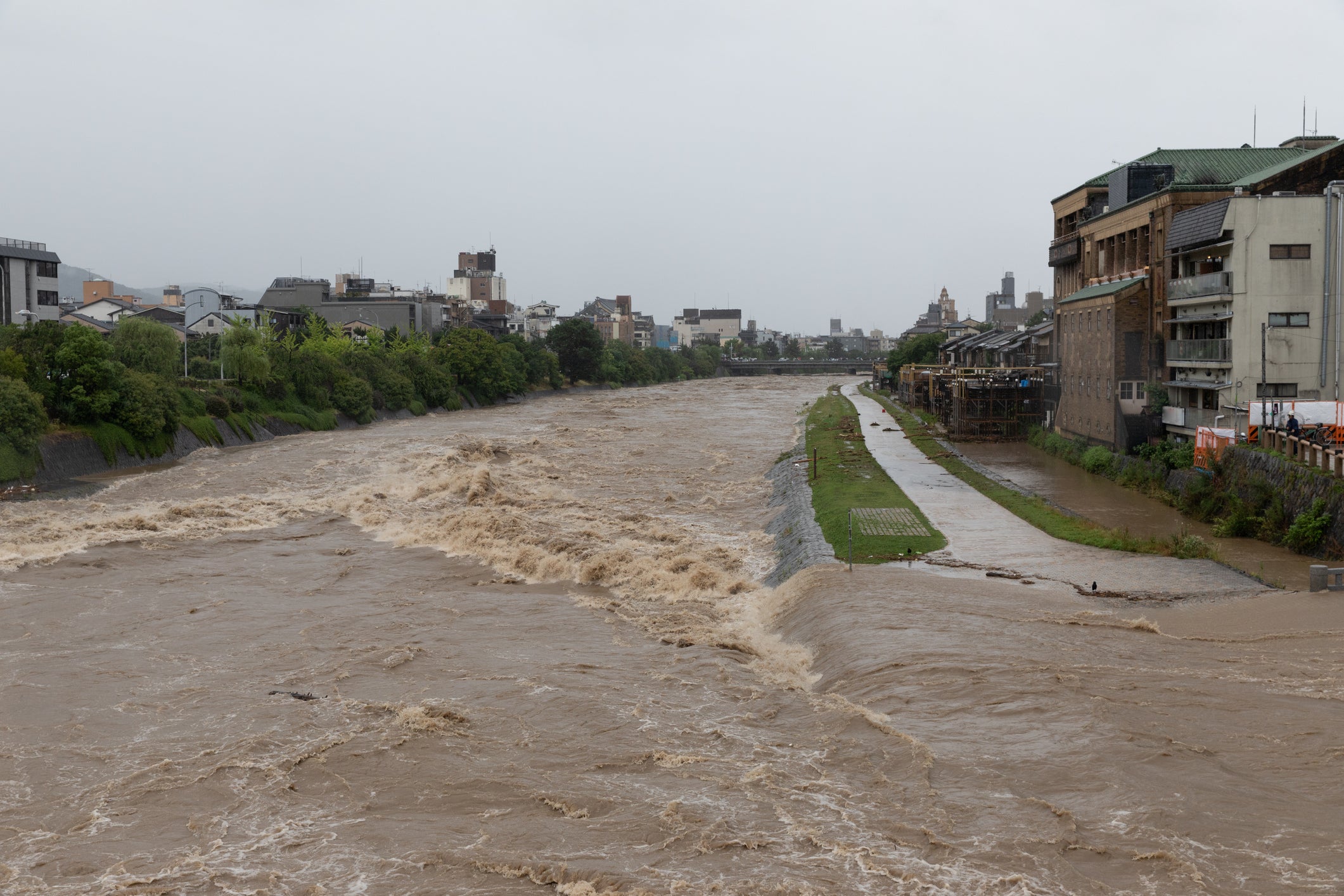Tsunami danger and its effects
table of contents
Introduction
1. Occurrence of tsunami
2. Tsunami danger
3. Impact of tsunami
4.Tsunami countermeasures
5. Case summary
Introduction
A tsunami is a large ocean wave caused by a natural disaster, such as an earthquake, volcanic eruption, or an undersea landslide. Tsunamis are considered one of the most dangerous natural phenomena due to their huge scale and speed. This article details the dangers of tsunamis and also discusses their effects.
1. Occurrence of tsunami
1-1 Earthquake or volcanic eruption
A tsunami is a phenomenon mainly caused by an underwater earthquake or volcanic eruption. Below, we will explain in detail how tsunamis are related to earthquakes and volcanic eruptions.
1-2 Tsunami caused by earthquake
① Occurrence of an earthquake
Earthquakes are phenomena in which the Earth's crust moves rapidly and releases energy. Earthquakes are caused by the breaking of rocks or the sliding of faults within the Earth's crust.
② Changes on the ocean floor
When an earthquake occurs under the sea, the tectonic movement caused by the earthquake affects seawater. Fault movements on the ocean floor create horizontal displacements that push or pull water masses.
③Tsunami formation
The movement of the ocean floor caused by an earthquake generates huge waves, which become tsunamis. This wave propagates through the ocean and heads toward the shore.
④Tsunami speed and scale
Tsunamis have very long wavelengths and are very fast under the sea, so they approach the coast quickly and generate high waves. The height of a tsunami depends on the topography of the coast and the topography of the ocean floor, and can range from several meters to several tens of meters.
⑤Displacement on the seabed
Earthquakes and volcanic eruptions can cause the ocean floor to move rapidly, pushing or pulling large amounts of water horizontally.
⑥Tsunami formation
This movement on the ocean floor forms waves as tsunamis. Tsunamis have very long wavelengths, typically ranging from tens to hundreds of kilometers.
1-3 Tsunami caused by volcanic eruption
① Occurrence of volcanic eruption
A volcanic eruption is a phenomenon in which rocks, gas, ash, etc. are ejected from a volcano, and is caused by the sudden release of magma pressure underground.
② Undersea volcano and tsunami
When a volcano located on the ocean floor erupts, it may come into contact with seawater. At this time, seawater evaporates and expands explosively, producing a large amount of water vapor. This explosive phenomenon causes a tsunami.
③ Occurrence and nature of tsunami
Tsunamis caused by volcanic eruptions, like tsunamis caused by earthquakes, are caused by sudden movements on the ocean floor. Tsunamis caused by volcanic eruptions vary depending on the size and nature of the volcano, and the height and speed of the tsunami also vary.
2. Tsunami danger
2-1 Destructive power of huge waves
Tsunamis have very long wavelengths and high wave speeds, and they propagate rapidly through the ocean. As a result, when a tsunami reaches a shallow coastal area, the wave height increases rapidly, sometimes reaching tens of meters or more. These huge waves cause devastating damage to buildings, port facilities, farmland, and people in coastal areas.
2-2 Difficult to predict
It is very difficult to predict the occurrence of tsunamis, and tsunami warnings are typically issued after natural phenomena such as earthquakes or volcanic activity occur. Tsunami warning sirens and sensors are installed for some earthquakes, but it is difficult to predict, so vigilance is required.
2-3 Impact on remote areas
Tsunamis can also affect coasts far away from their origin. Because tsunamis propagate underwater, they can reach coasts even far away from their origin. For this reason, international cooperation is necessary, and it is important to share information and develop warning systems between regions.
2-4 Attack in a short time
Tsunamis travel through the ocean at extremely high speeds. Therefore, you may only be able to prepare for evacuation for a short time after the outbreak. Prompt action is the key to saving lives, but time constraints are a major danger.
2-5 Danger of subsequent waves
Tsunamis often consist of multiple waves, and follow-up waves can strike even after the first wave has passed. Subsequent waves can be higher than the initial wave and cause continuous damage.
2-6 Social and economic impact
Tsunamis also have a serious impact on the economies of the affected areas. Social and economic losses can be large, such as destruction of buildings and port facilities, salt damage to farmland, and damage to the tourism industry.
3. Impact of tsunami
3-1 Human impact
①Casualties
Tsunamis produce huge waves that engulf people and animals, causing injuries and deaths.
② Areas where evacuation is difficult
In areas without proper evacuation plans in case of a tsunami, it will be difficult for people to evacuate, increasing the possibility that damage will spread.
3-2 Impact on buildings and infrastructure
①Destruction of buildings
Tsunamis destroy buildings, including homes, commercial facilities, and port facilities.
②Damage to port facilities
Port facilities and ships can also be damaged by tsunamis, affecting navigation and logistics.
③ Damage to roads and bridges
Tsunamis destroy roads and bridges, causing traffic disruptions.
3-3 Economic impact
① Damage to property and finances
Damage to buildings, farmland, fishing assets, tourism, etc. has a major economic impact.
②Reconstruction costs
Repairing and rebuilding damage caused by a tsunami can be costly and financially stressful.
3-4 Impact on the environment
① Salt damage
Tsunami seawater contains salt and can cause salt damage to farmland and groundwater.
② Impact on the ecosystem
Tsunamis also have a major impact on coastline ecosystems, causing damage to marine life and coastal vegetation.
3-5 Social impact
①Evacuation shelter and living conditions
The tsunami forces many people to evacuate to evacuation centers, worsening their living conditions.
②Psychological impact
Tsunami victims and survivors may experience psychological trauma and stress.
3-6 Impact on education and culture
①Schools and cultural heritage
Schools and cultural heritage sites may also be affected by tsunamis, resulting in educational and cultural losses.
3-7 International influence
① International support
When a large-scale tsunami occurs, support from the international community is needed and international cooperation is required.
4.Tsunami countermeasures
4-1 Development of tsunami warning system
A tsunami warning system will be established in the region to enable early warnings to be sent out. We will install sensors to observe earthquakes and tsunamis and collect data to issue warnings. A system will be put in place to send out warnings and notify residents and related organizations of the arrival of a tsunami.
4-2 Formulation of evacuation plan
Develop a tsunami evacuation plan and instruct residents on appropriate actions. The plan includes designating evacuation routes and shelters. Conduct regular evacuation drills to educate residents, schools, and facility staff on evacuation practices.
4-3 Design of tsunami-resistant buildings
Promote the design and construction of tsunami-resistant buildings and facilities. This includes solid foundations, building materials that meet high standards, high floor elevations, and more. We also carry out renovation work on existing buildings if they require tsunami-resistant renovations.
4-4 Strengthening the disaster management system
Develop regional and national disaster management systems and establish organizations and protocols to deal with tsunamis. Strengthen the training and equipment of emergency response agencies and rescue teams.
4-5 Information awareness and education
Educate residents about the dangers of tsunamis and the appropriate actions to take when receiving a warning. Disseminate information about tsunamis through the media and schools.
4-6 Ground investigation and hazard mapping
We conduct local ground surveys and identify areas with a high risk of tsunami occurrence. Create hazard maps to show residents and developers the risks of tsunamis.
4-7 International cooperation and information sharing
Strengthen international cooperation and share information on tsunami warning systems. We will strengthen cooperation with neighboring countries and jointly address the effects of the tsunami.
4-8 Emergency response kit and stockpiled supplies
Stock up on emergency response kits and supplies needed for life in the evacuation center (food, water, medicine, etc.).
4-9 Survey and research
We will conduct scientific research and monitoring of tsunamis and strive to improve prediction technology.
5. Case study
It is not possible to accurately predict all tsunamis caused by earthquakes, and in many cases people were able to avoid casualties by following the principle of evacuation when a tsunami hits: fleeing to higher ground as quickly as possible. In the Great East Japan Earthquake, there were many cases in which the tsunami waves were much higher than originally predicted.
The damage caused by a massive tsunami caused by an earthquake is far from what you would imagine from the word "wave." Cases where entire towns were swallowed by the tsunami, houses were washed away, buses, trains, and large ships were washed ashore from the sea, and cases where people evacuated to higher ground of 20 meters or more but were swept away by waves that came around from behind. In some cases, the tsunami ran up the terrain and reached a height higher than the announced tsunami height.
Tsunamis do not just hit once, but multiple times, and in some cases, the waves that hit later, such as the second or third waves, are higher than the first wave. After the first wave subsided, some people returned to their homes and became victims. Even if the waves recede, please continue to evacuate until the tsunami warning/advisory is lifted.
Even if the tsunami does not arrive after the announced estimated arrival time, please continue to evacuate until the tsunami warning/advisory is lifted. The estimated arrival time is just a guideline, and the actual arrival time may be earlier or later than the estimated arrival time.
Source: Prime Minister's Office "What kind of disasters will occur in a tsunami?" https://www.kantei.go.jp/jp/headline/bousai/tsunami.html
(Last viewed September 7, 2023)
summary
Tsunamis are one of the most dangerous natural disasters, and it is important to understand their occurrence and impact. Appropriate preventive measures, the establishment of warning systems, and the formulation of evacuation plans will help in disaster prevention measures against tsunamis. Communities, governments and the entire international community need to work together to address tsunami risks and advance measures to protect people.








